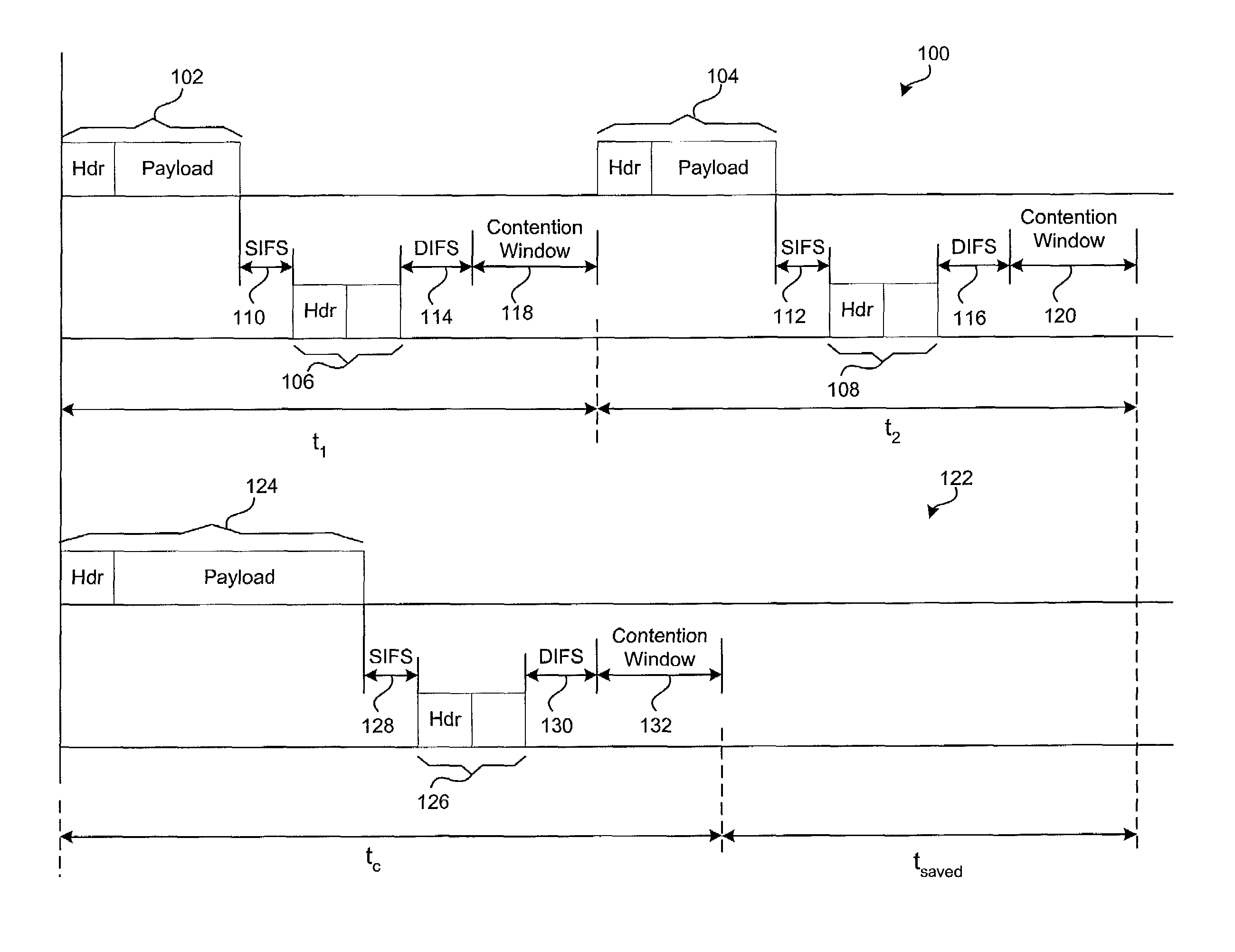Packet assembly
a packet and assembly technology, applied in the field of data packet structure, can solve the problems of limited throughput of wlans and ineffective wireless networks of 802.3
- Summary
- Abstract
- Description
- Claims
- Application Information
AI Technical Summary
Benefits of technology
Problems solved by technology
Method used
Image
Examples
Embodiment Construction
[0017]The disclosed architecture is particularly suited for air protocols, and more particularly for wireless bridges which send packet traffic to the same destination.
[0018]Referring now to FIG. 1, there is illustrated a graphical comparison of a conventional smaller (or short) packet structure and the resulting larger (or long) consolidated data packet structure when processed in accordance with the disclosed algorithm. Packets having either long or short headers are described in the IEEE 802.11b standard. Packets having long and short headers are used herein to describe the packet assembly architecture. A packet sampler samples at least a first packet and a second packet for processing by a processing device. A first part of the graph illustrates a first packet stream 100 that includes two smaller packets 102 and 104 which have been sampled, and contain respective acknowledgment (ACK) signals 106 and 108. Each packet 102 and 104 is followed by a corresponding short interframe spa...
PUM
 Login to View More
Login to View More Abstract
Description
Claims
Application Information
 Login to View More
Login to View More - R&D
- Intellectual Property
- Life Sciences
- Materials
- Tech Scout
- Unparalleled Data Quality
- Higher Quality Content
- 60% Fewer Hallucinations
Browse by: Latest US Patents, China's latest patents, Technical Efficacy Thesaurus, Application Domain, Technology Topic, Popular Technical Reports.
© 2025 PatSnap. All rights reserved.Legal|Privacy policy|Modern Slavery Act Transparency Statement|Sitemap|About US| Contact US: help@patsnap.com



